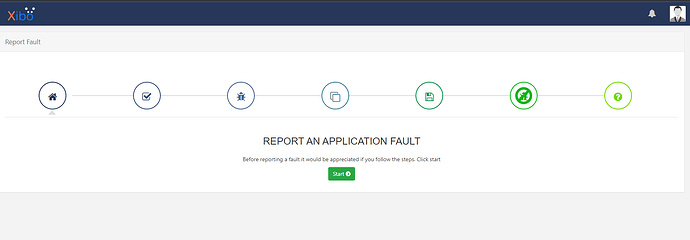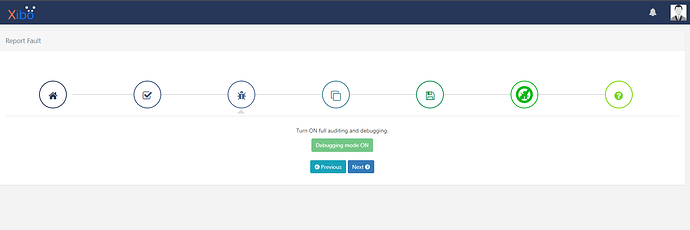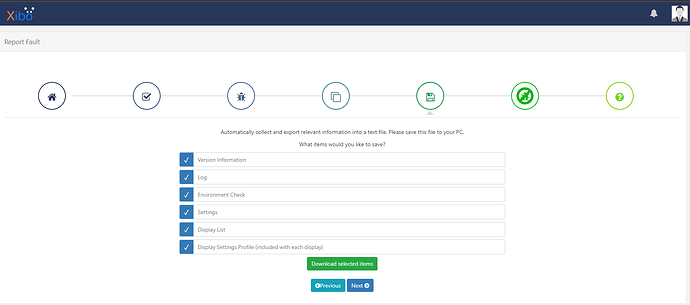While using Xibo CMS, you may encounter an issue. In most cases, you will find that the error message will provide sufficient information to understand what has caused the issue. Occasionally, you may receive an error message that does not explain the reason for the issue, or an unexpected error if it relates to an unknown issue. If you find yourself in this situation, or you want to access more information about the issue, you can use the Report Fault page to record detailed logs. Below are the steps you will need to follow to record and save those logs.
Please note that you will need to log in as user that has the required features or user type to access this option.
Recording troubleshooting logs.
- Go to the
Report Faultpage in your CMS.
- Follow the steps and choose
Turn On Debuggingwhen the option appears.
- Continue with the steps and choose
Open in new tab/windowwhen the option appears. Do not close the original window/tab, you will need to return here shortly.
- On the new window, replicate the issue so that you see the returned error, or the behaviour you are trying to capture.
- Once you have replicated the issue, close the new window/tab and return to the original window with the Report Fault steps.
- Continue with the steps and click
Collect and savewhen the option appears. This will download a zip file namedtroubleshoot.
You will see there are a number of options you can select before you click
Collect and save. We only require the 'Log` option for this purpose, however you can choose the other file types if you also require them for your investigation.
- Finally continue with the steps and choose
Turn Off Debuggingto complete the steps.
Inside that troubleshoot zip file will be the logs that have captured the issue.
Viewing the logs
Now that the logs have been captured, we can view them. First you will need to use a File archiving tool to extract the folder containing the logs we want to access. When you have done that, you will be able to access the extracted folder and see all of the file options you recorded.
The JSON files can be viewed with a text editor, while the log file (CSV format) requires a spreadsheet editor. For my demonstration I will be using Openoffice Calc, but you can use any spreadsheet editor you are familiar with.
You can see before I try to open the file, I have set the set the Separator Options to Comma and Space, as this is a CSV file:
This will open the log in the spreadsheet editor.
Please note that the logs you record may contain sensitive data about your CMS setup. With this in mind, we do not recommend posting your log CSV files publicly on the community forum.






